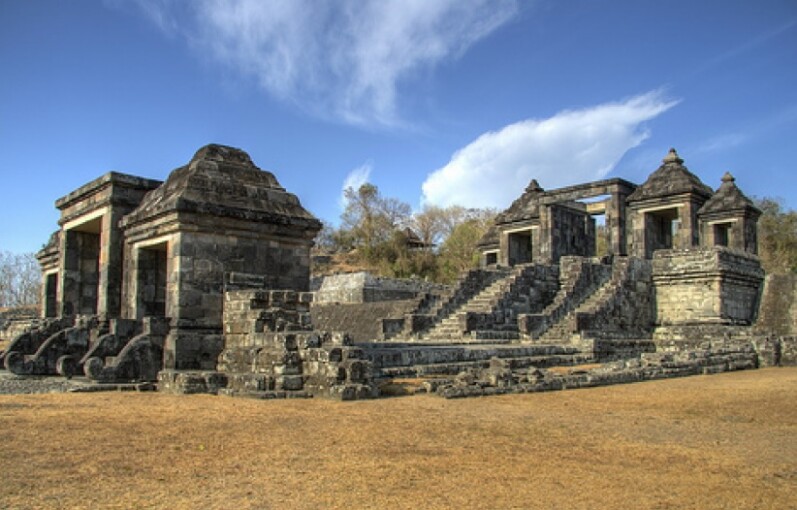
Ideally, a tourist destination built based on cultural heritage, such as the Ratu Boko Palace area, should be able to provide welfare to the community. Unfortunately, the Ratu Boko Palace area has not been fully helpful for the low-income people around. In fact, Prambanan Sub-district itself currently has around 12.53% or 2,315 poor households. The distribution includes Sumberharjo (625 households), Wukirharjo (185), Gayamharjo (275), Sambirejo (325), Madurejo (530), and Bokoharjo (375).
In fact, the financial realization in 2019 showed a profit after tax of around 100.71% of the target from the management of Borobudur Temple Tourism Park, Prambanan Temple, Ratu Boko Palace and other business units.
This was raised in the Tourism Seminar Series, Tuesday (12/1) with the theme: “Cultural Heritage Tourism in the Ratu Boko Palace Area, Inequality in Management?”.
The Tourism Seminar Series was held by the UGM Postgraduate School Tourism Studies Program (SPS). The initiators of the discussion were Prof. Dr. Ir. Chafid Fandeli, M.S as a joint respondent with Ari Setyaningsih and Indung Panca Putra from the Yogyakarta Special Region Cultural Heritage Conservation Center (BPCB DIY) moderated by Dr. Yulia Arisnani Widyaningsih, MBA, Ph.D.
Dr. Maria Tri Widayati, an alumna of the S3 UGM Postgraduate School Tourism Studies, who is currently a lecturer at the Polytechnic “API” Yogyakarta at the event highlighted the management problems of the Ratu Boko Palace area, which so far have not been considered maximally providing business opportunities for the surrounding community.
She said that the crucial thing that makes it not optimal was the centralization of management by PT. Taman Wisata Candi Borobudur, Prambanan and Ratu Boko. In fact, it can be regarded as a huge monopoly practice. At least, that’s what was conveyed by the public when Dr. Maria conducted interviews and focus group discussions.
“Other problems that need attention, such as the issue of land tenure at the Ratu Boko Palace site, namely zone 1, which should be sterile, but still have residential areas, also the local people who feel uninvolved in management, and the entrance officers who show zero tolerance for them,” Maria explained.
Besides, problems also occur between managers. For example, managers come from different ministries, as well as different interests, PT TWC BPRB has not fully involved other stakeholders in the management of the Ratu Boko Palace Tourism Park, the imbalance between conservation and utilization, and poor coordination among the field officers.
In detail, Dr. Maria explained BPCB does not get direct income from PT. Taman Wisata Keraton Ratu Boko, but receives management funds indirectly through the Directorate of Cultural Heritage Preservation and Museum of 500 million/year for its protection and preservation. Ironically, starting in 2015/2016, the budget for conservation was stopped.
“So, BPCB of Yogyakarta no longer gets these funds for the preservation of the Ratu Boko Palace area. Meanwhile, the salaries of the president director and director of PT TWC BPRB are around 100,000,000 – 120,000,000 per month,” he added.
He assessed that a cultural heritage site that is managed for tourism must still be preserved, and must be able to provide welfare for the people. Therefore, there is still one more stage, namely to open access to the public to participate in the tourism activities so that they both benefit from the activities and together maintain the site remains sustainable.
Prof. Dr. Ir. Chafid Fandeli, M.S as the discussant said that the Ratu Boko Palace area is ecologically in the right place, unlike Prambanan which is often flooded. It is as if the architects of old have understood environmental physics ‘the principle of communicating vessels’’ that says there is water between the hills. Stories like these are what really needs to be conveyed to visitors and the younger generation.
Prof. Heddy as a discussion participant highlighted the importance of integrating the existing inscriptions and archaeological sites around Boko and Prambanan. Then, it is summarized and included in proper ‘storytelling’ so that it is more attractive to tourists and the younger generation.
Author: Satria
Photo: Republika.co.id
Translator: Salma

